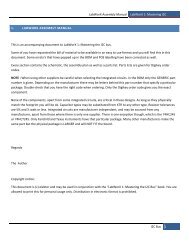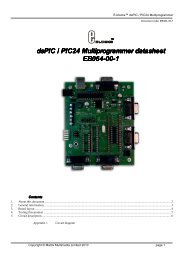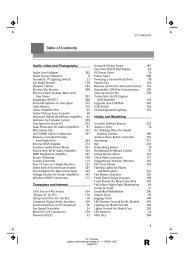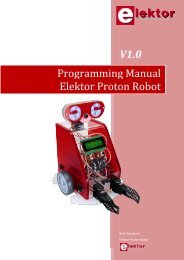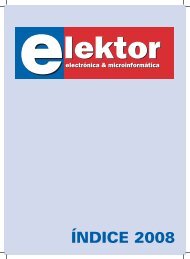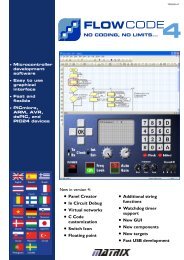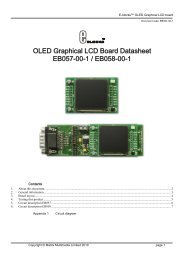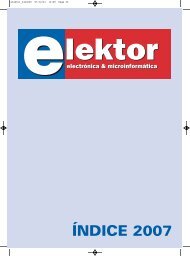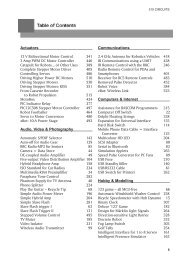RFID - Elektor
RFID - Elektor
RFID - Elektor
You also want an ePaper? Increase the reach of your titles
YUMPU automatically turns print PDFs into web optimized ePapers that Google loves.
5 Introduction to Cards and Tags<br />
‘dual-interface cards’ (DIF cards) which have both interfaces available. Typical examples<br />
are bank cards (which use a contact chip) that can also be used as tickets for public<br />
transport (contactless), and (contactless) access control cards (employee IDs) that can<br />
also be used to log in to PCs (requiring contact).<br />
DIF cards are typically only suited to high-cost applications, as the chip processing in<br />
the card is more complicated than for a contact-type or contactless smartcard. All of<br />
the MIFARE cards described herein are purely contactless.<br />
5.2 MIFARE<br />
MIFARE is a registered trademark of NXP Semiconductors, B.V. (formerly Philips Semiconductors),<br />
and is made up of the words ‘Mikron’ and ‘fare collection’. MIFARE is a brand<br />
name, not a product name.<br />
5.2.1 MIFARE Overview<br />
In the early 1990s, the Mikron company developed the original MIFARE card — the ‘MI-<br />
FARE Classic 1K’, which was shipped with a reader device, in 1994.<br />
The target application was the public transport system (fare collection), i.e. the use of<br />
a contactless smartcard as an electronic ticket for train, bus, subway or tram.<br />
This has become a reality in many cities and regions across the world, and modern<br />
transportation systems couldn’t get by without electronic travel tickets. For this reason,<br />
there now is a whole range of card ICs that are sold under the MIFARE name.<br />
5.2.1.1 Success Story<br />
copyright <strong>Elektor</strong><br />
MIFARE products very quickly established themselves on the market, and MIFARE is a<br />
success story. Aside from Philips Semiconductors (now NXP), which acquired Mikron at<br />
the end of the 1990s, Infineon (previously Siemens Semiconductor Division), also<br />
manufactures MIFARE products under license. Today there are several license holders<br />
for MIFARE technology, and much of this technology has found its way into ISO standards,<br />
such as the ISO/IEC 14443.<br />
The MIFARE product portfolio is continuously being expanded, so that everything from<br />
simple, cheap electronic paper tickets to complex, certified high-security cards are in<br />
use. The MIFARE Classic is still sold, as always, and is probably the most widespread<br />
contactless smartcard. While the exact numbers are not disclosed by the participating<br />
companies, we can assume that there are more than a billion MIFARE Classic cards<br />
currently in use.<br />
5.2.1.2 MIFARE Clone<br />
Such huge success naturally attracts some imitators, such as the ‘Chinese clones’. Even<br />
before the turn of the millennium, Chinese companies were attempting to tear down the<br />
140



